We’ve all done some strange things for training from time to time. But you would have to go some to match the training Ron Clarke put in one weekend in 1966.
Granted, most of us would have trouble matching anything Ron Clarke did (other than, perhaps, the three years he had ‘off’ between his junior years and his comeback as a senior); but his weekend of 15-16 October that year was something else again.
On the Saturday, Clarke was one of a number of senior athletes who competed in a schools meeting at Melbourne’s Scotch College. The school oval boasted a state-of-the-art high jump apron for the clash between Tokyo 1964 Olympic representatives Lawrie Peckham and Tony Sneazwell clashed in the men’s high jump.
Clarke’s contribution was to run the two miles in competition with 4×880 yards relay teams representing Scotch College, Melbourne High School, St Bede’s College and Old Scotch Athletics Club. He was third across the line – subsequently elevated to second by the disqualification of the ‘winning’ team – in the handy time of 8:42.
Unusual, perhaps, but so far nothing too far outside the square. The weird bit came the following day when Clarke ran a 13-mile cross-country against a racehorse. Not just any racehorse, but a two-time national steeplechase winner named Sir Cameron. Clarke was never much good over the track steeplechase, so it was no shock when Sir Cameron ‘won’, the runner even sportingly suggesting that the horse, or the jockey, at least, had gone easy on him until the final sprint.
Clarke’s running weekend was featured in an article in the following Monday’s Age newspaper under the headline “Clarke was no Galilee,” a reference to the horse which had won the Caulfield Cup the same weekend (and would go on to win the Melbourne Cup a few weeks’ later).
It’s just as well the events were reported, because it’s the sort of story which might otherwise be greeted with an exclamation of “Come off the grass!” For those not familiar with that expression, the Urban Dictionary defines it as: “To tell someone that they are not thinking straight and they need to get real!”
The middle-to-late 1960s corresponds with the time grass was rapidly disappearing from Australian athletics. Up until then, most Australian competition was conducted on grass tracks. Melbourne’s Olympic Park and Sydney’s E.S.Marks Field were cinders, but they were very much the exceptions and definitely not the rule.
The question came up on Trevor Vincent’s Distance Running Nostalgia page recently when someone wondered what were the most recent world or Australian records run on grass tracks. While not taking a deep dive into the subject – you’d need oxygen tanks for that! – the last world record I can find set on a grass track was Clarke’s 13:34.8 (actually 13:34.7, but rounded up to the next 0.2 under rules of that time) in Hobart in January, 1965.
This was a world record of some significance. For a start, it broke the previous record set by the great Emil Zatopek, but it also ignited Clarke’s legendary year which saw him set no fewer than 11 world records at 3mls/5000 metres, 6mls/10,000 metres, 10 miles, 20,000 metres and the 1-hour run.
It also prompted Clarke to go and break the record again. According to a story he told me one time, the North Hobart Oval, where he first broke the record, was on a slope and through the 12-1/2 laps of the 5000 metres he ran down the slope 13 times and up it only 12 times. Thinking the time may not be ratified, Clarke ran another 5000 in Auckland a couple of weeks later, this time winning in 13:33.6. he need not have worried: both performances were ratified as world records anyway.
Up until the 1960s, most Australian championships were run on grass tracks. Even in Sydney, where there was a good cinders track at Marks Field, championships were often run on the Sydney Cricket Ground of the adjoining Sydney Sports Ground, both of which were grass. When Brisbane hosted the titles they would be held at the Exhibition Ground, Adelaide had the Adelaide Oval, Perth’s venue was Leederville Oval and, as mentioned, North Hobart was likewise a football ground with a grass track.
Perusing the yearly almanacs on Athletics Australia’s historical results page, it’s interesting to note that up until 1960, all the top Sydney venues other than Marks Field had grass tracks. In the last full domestic season before the Melbourne 1956 Olympic Games, the Olympic city’s only cinders tracks were at Olympic Park and the Melbourne Showgrounds, the latter, presumably, because the Showgrounds was once favoured as the main stadium for the Games.
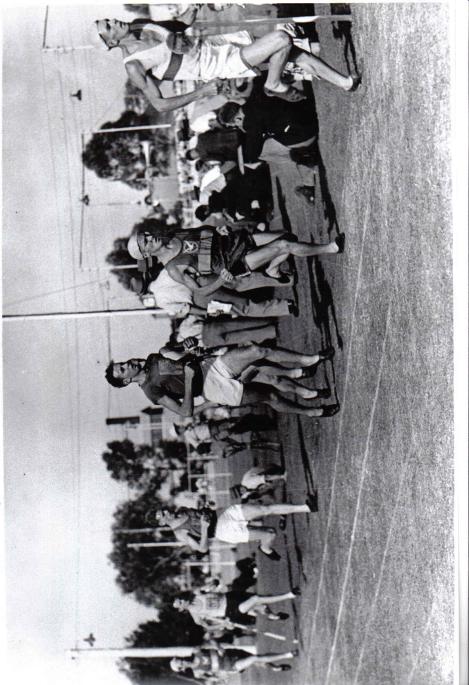
Even five years later, in 1961-62, the Victorian cinders tracks listed in the almanac were Olympic Park, the Melbourne Cricket Ground (a track which was dug up immediately after the Games), Melbourne University (a Games legacy as it was used as a training venue in 1956) and Dolamore Oval in Mentone (surfaced with the MCG cinders). There was a whole host of grass tracks, including at Bright and Myrtleford, at the foot of the Bogong High Plains.
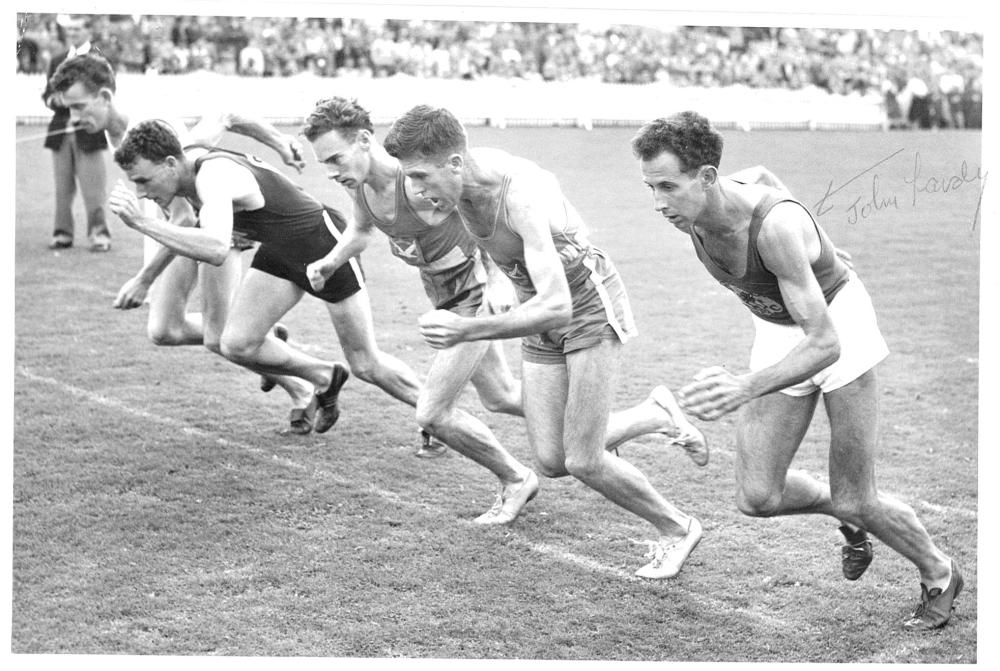
In those days, a grass track could be marked out and mown anywhere a groundkeeper could be prevailed upon to do it. But as sports fields were transformed from a worker’s pride and joy to a local administrator’s cost centre, first rubberised bitumen and then synthetic surfaces prevailed and grass tracks largely disappeared.
More’s the pity.
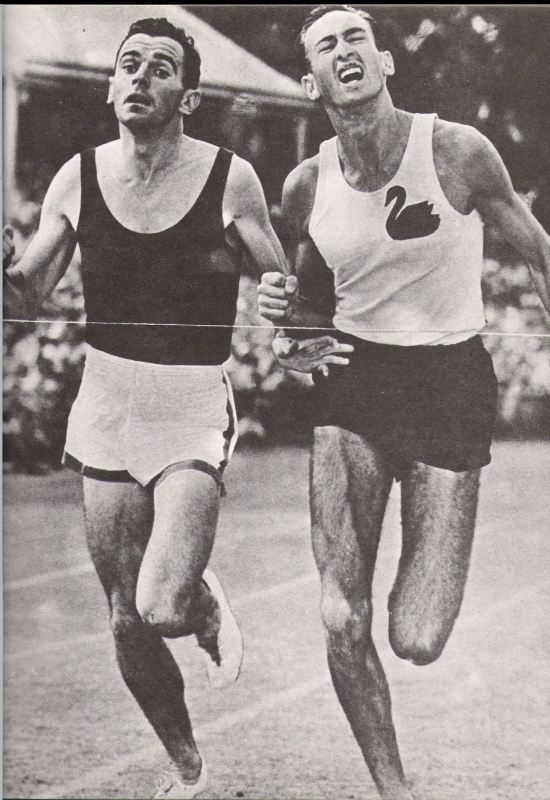




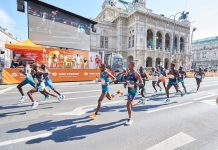
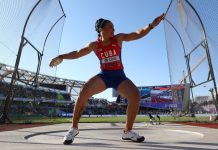
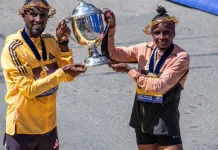












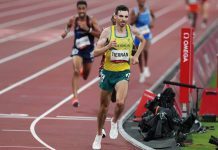
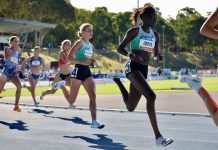
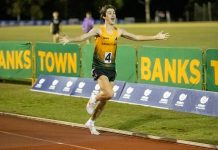

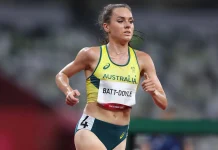
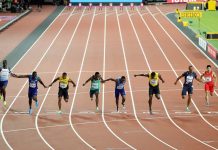



The 5k World Record Clarke broke in Hobart was held by 1956 Olympic Champion Vladimir Kuts, not by Zatopek.
John, you’re right, of course. Getting my Olympic legends mixed up. Len J